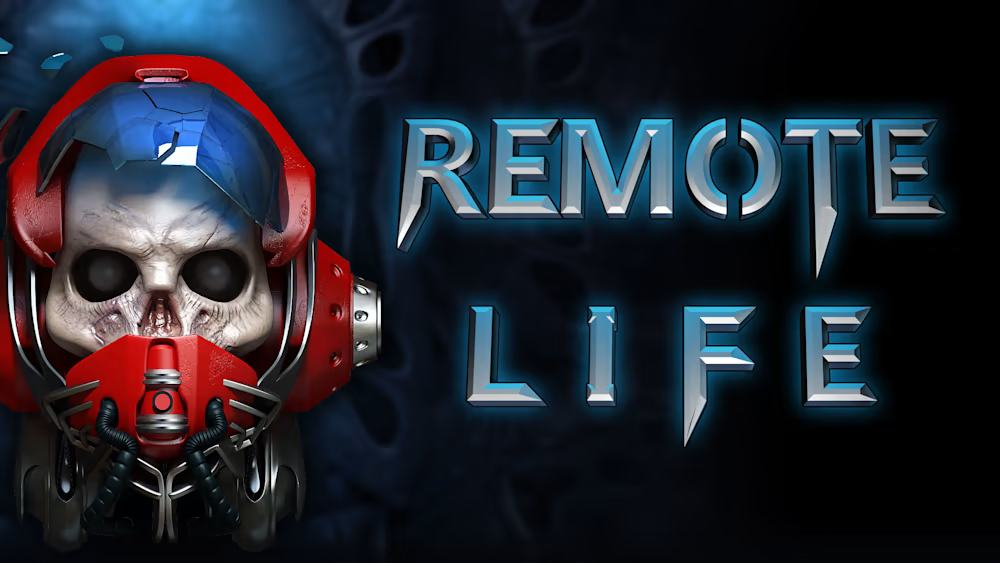
This won’t be your standard review and for that I apologize. I’m a big fan of shmups of all sorts but there’s one type that particularly infuriates me and that’s the Euroshmup. For the uninitiated, Euroshmups are a sub genre of shmups. Typically, they play slower than standard shmups with a larger hitbox, plodding pacing, and tight terrain which makes navigation a chore at best and a nightmare at worst.
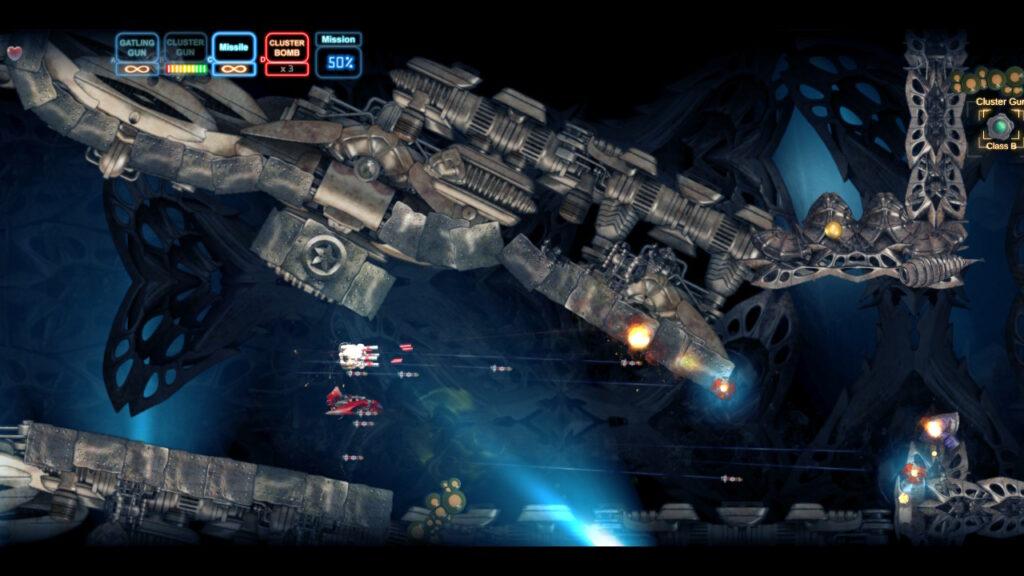
Remote Life from Next Game Level and Ratalaika Games is the embodiment of the Euroshmup design concept. The hitbox is essentially the entire ship, you move at a glacial pace, and firing is controlled with the right trigger combined with the right thumbstick. It’s a weird, awkward affair that has a fairly substantial learning curve compared to most games in the genre.
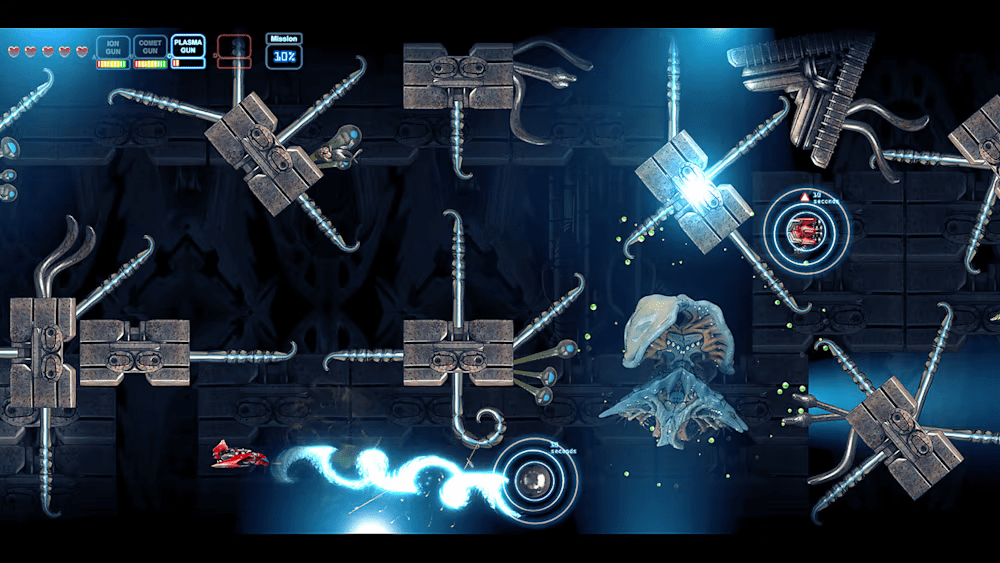
The first thing you’ll notice however is that Remote Life is utterly and unabashedly gorgeous. This is a tiny game from a one-man Italian studio and it looks like someone resurrected H.R. Giger in order to get him to make a video game. Every aspect of design from backgrounds to enemies to weaponry is clean and slick with unique and engaging visuals at every turn. The second thing you’ll notice is that the game is as evil as it is beautiful.
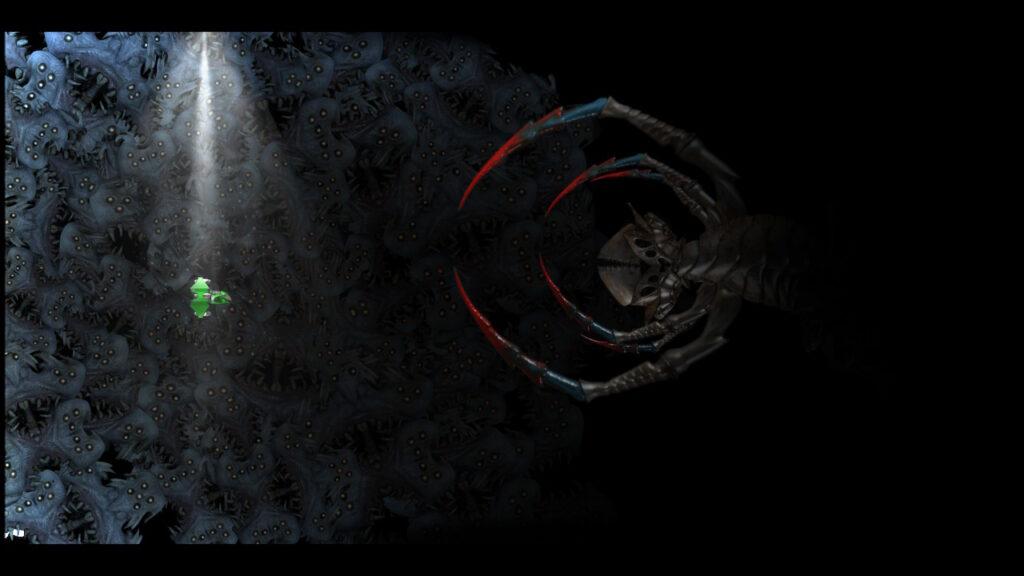
See, Remote Life is ridiculously hard. Even after you figure out that this is a twin stick game masquerading as a standard shmup, you’ll get little to no respite. Corners and areas are so tight that it’s nearly impossible to dodge the sparse enemy fire, there’s no way to block bullets and the slightest twitch or mistake kills you. Run out of lives and it’s game over, no continue either. That means that if you can’t beat a level, you can’t get any further. Very old-school. No continues makes things incredibly vicious, forcing you to grind through levels over and over again until you eventually come out the other side (or not in my case) lacking a fair bit of sanity.
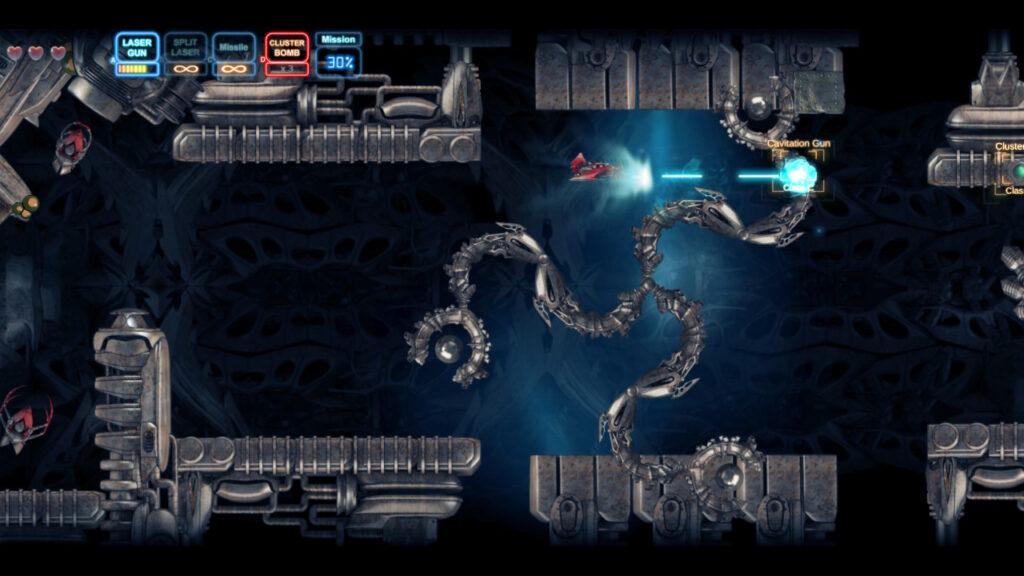
The reason this isn’t a normal review is that I am remarkably bad at Remote Life. I honestly struggled to beat levels at all and didn’t make significant progress in the game. Part of that is the sheer difficulty. Part of that is the fact that the game, while utterly stunning visually, is simply lacking that f lair, that fun factor that makes you want to keep playing. For a game that looks so good, Remote Life feels, well, lifeless. It took me a while to make it to the end boss of the first stage and even then I struggled quite some time before making it to the second at all. From there, things only get worse. Why not change the difficulty, you ask? Turns out, you can’t. You have to earn that right and that’s about the time where I dropped a string of vaguely connected expletives and sat down to tell you all about it.
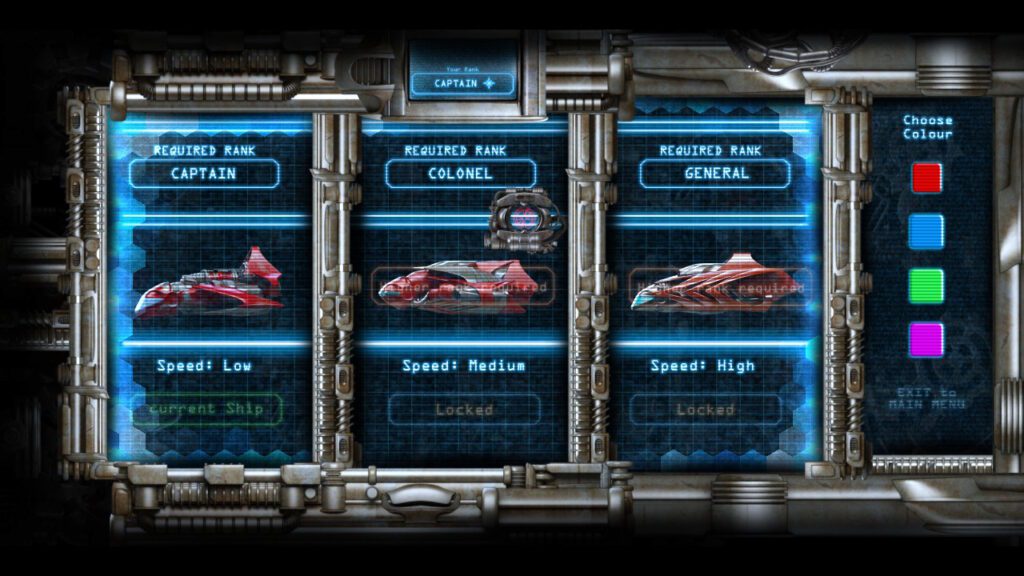
There’s a certain masochism in shmup fans. They love to throw themselves at the wall over and over again until they get the hang of something, then do it another thousand times to perfect it. I’m not a 1CC kind of guy and I play for fun. I can navigate around most bullet hell shooters, find the pathways, but I don’t bother with high scores and such. It’s a good thing too, since Remote Life doesn’t even have a scoring system! Points aside, I’d say I’m decent at these titles, familiar with the mechanics, and more than a competent player. But Remote Life feels more like taking the hardest parts of R-Type, mixing them with the Euroshmup genre, and saying “Here ya go suckers!” It’s the worst kind of grind and as such, it’s just not entertaining.

That’s a shame because I really loved everything else about the game. The graphics are right up my alley, the weapons are very cool with unique looks to them that crib from some of the greats. The overall aesthetic and even the music are great. The game just isn’t for me. Some people might love it and it wouldn’t surprise me at all to hear some rather outspoken disagreements about the game after players read this review. Not every game is intended for every player after all. But Remote Life is simply not enjoyable in my opinion and I hope that you’re not like me if it’s on your radar because personally, I desperately wanted to enjoy the game.
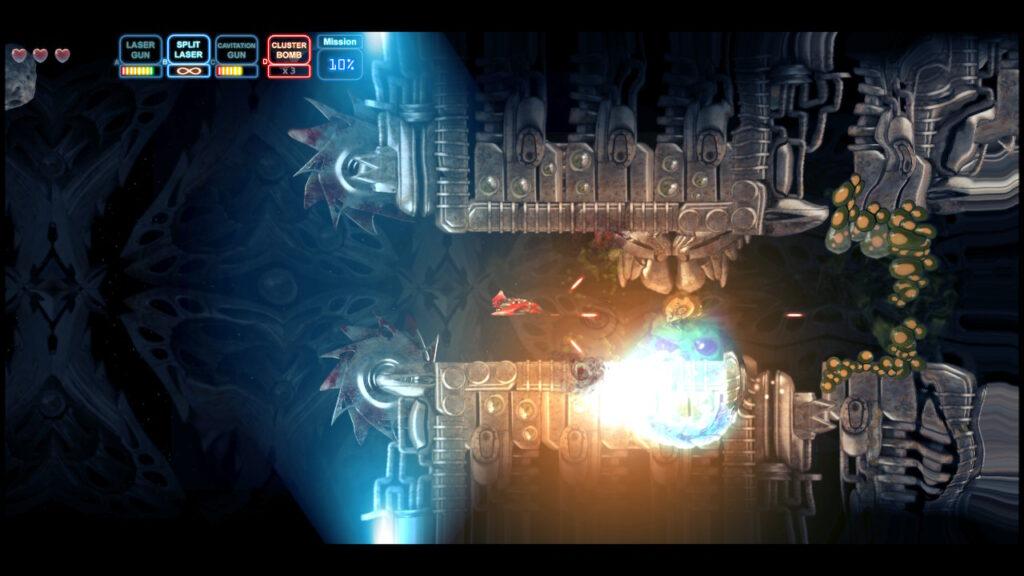
The controls are particularly infuriating and twin stick games generally have a fair bit of leeway, but holding down a trigger constantly while using the left and right buttons to switch weapons and aiming with the right stick is awkward, pure and simple. It’s a scheme that just screams hand cramps, especially for us older players. And sure, my reflexes aren’t what they used to be but this isn’t a reflex game. It’s a methodical grind that sucks the soul out of experimentation. Do it this way or die. Now do it better. Now start over because you made a tiny procedural error after exhausting your hands. That repetitive gameplay just isn’t a draw and it’s hard to understand what the thinking is making hitboxes that big.
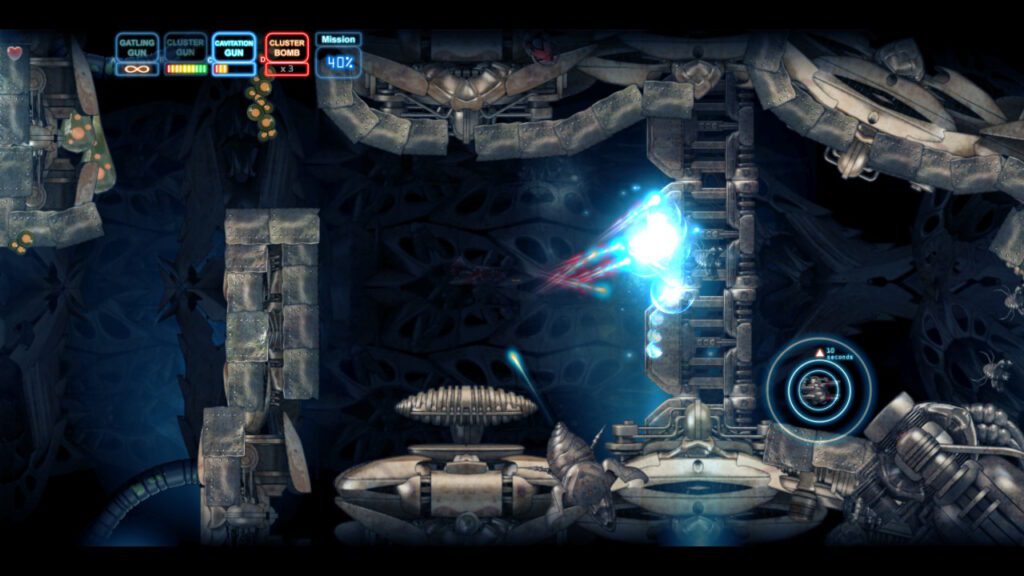
Chances are if you’re a Euroshmup fan, this review has probably already enraged you and if so, my apologies. Normally I’d break down the gameplay, music, visuals, and more, but I wanted to be clear just how much Remote Life is not a game designed for a player like me. And with that said, it’s not a bad game at all. It’s just not going to appeal to a wider audience. At $19, it’s honestly better to have a good idea what you’re getting into. Remote Life is an incredibly niche title and for those of you that are still thoroughly excited, I’m truly happy for you. As for me, I’m going to go relax with some Cave stuff to cleanse my video palate. Happy gaming!
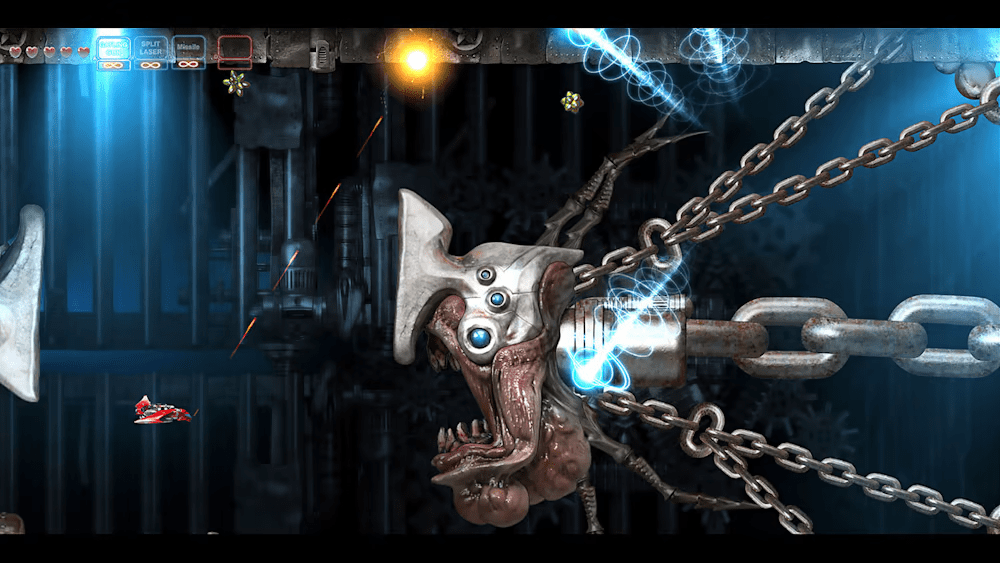
This review is based on a digital copy of Remote Life provided by the publisher. It was played on a Nintendo Switch in both docked and undocked modes and played equally well in both. Remote Life is also available on Xbox, PS4, and PC on Steam.

